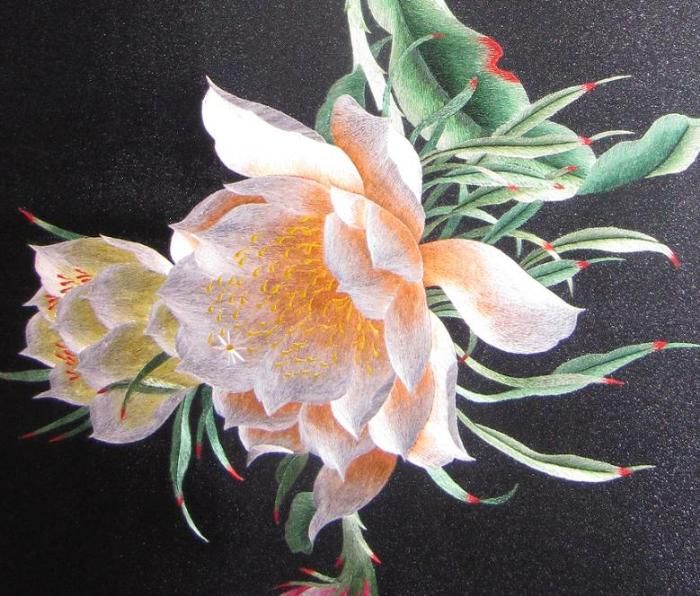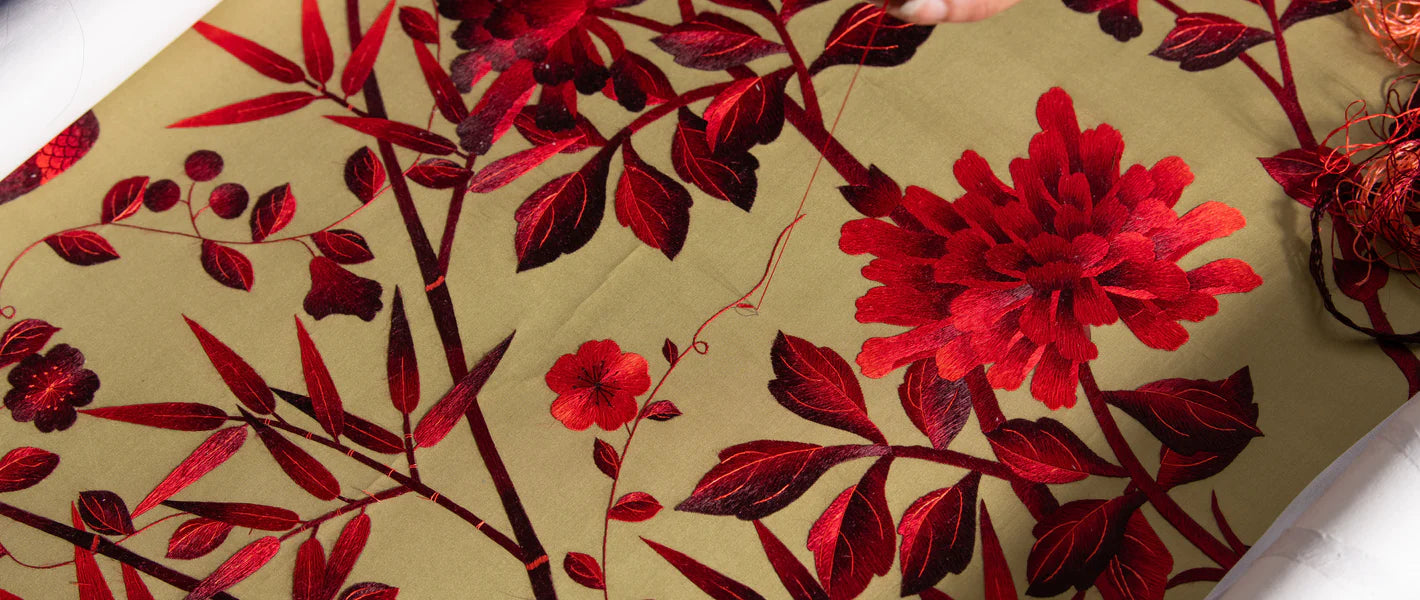Navigation
- Examine Design and Composition
- Analyze Use of Color
- Understand Traditional Techniques
- Explore Historical Inspiration
- Gain Deeper Appreciation
Suzhou embroidery is one of China's most renowned art forms originating from the city of Suzhou in Jiangsu Province. Dating back over 1,000 years, Suzhou embroidery is prized worldwide for its exquisite designs, mastery of color, and meticulous handiwork. However, without understanding some of the inherent artistic elements, origins, and techniques involved, viewers may not fully appreciate the timeless beauty and cultural significance of these textile treasures. Let's explore the key aspects to consider when examining a piece of Suzhou embroidery up close.
Examine Design and Composition

The first thing to do is observe the overall pattern or design covering the fabric. Many Suzhou pieces feature symmetrical arrangements of dominant motifs that are carefully balanced. Identify the core images repeated throughout like flowers, birds, insects or landscape scenes. Their symbolic meanings, whether depicting joy, wealth, or wishes for fertility, often relate to traditional Chinese philosophies. Below are the examples about what are the motifs representing:
- Flowers - Common floral motifs like peonies, lotuses and chrysanthemums represent qualities like prosperity, purity and longevity. Certain flowers bloom during different seasons, carrying implications of rebirth or transient beauty.
- Birds - Visualizing free birds in flight symbolized rising in status or good fortune. Pairs of birds conveyed wishes for a harmonious marriage. Pheasants, swallows and cranes each had their own symbolic meanings.
- Butterflies - Seen as a transformational symbol of a soul or spirit. A pair of butterflies represented joyful reunion because of their migratory nature.
- Dragons and phoenixes - Reserved for use primarily in imperial embroidery, these mythological creatures symbolized imperial power and high social rank.
- Scholarly objects - Scrolls, books and brushes signified respect for literature and learning in Chinese culture.
- Landscapes - Idyllic natural scenes conveyed Taoist harmony with nature or Confucian ideals of serenity through poetic vistas.
- Zodiac animals - Motifs like monkeys, rats or oxen identified birth years and their attributed Chinese zodiac personality traits.
By incorporating these motifs rich with symbolic meaning, Suzhou embroiderers effectively communicated philosophical, social and moral messages through their visual artwork on silk. This added cultural dimensions beyond just the technical beauty.
Analyze Use of Color
Suzhou embroidery is renowned for its exquisite use of color. Take note of the chosen palette, which usually stays close to natural tones found in nature. Admire how different hues like reds, greens and blues are blended together seamlessly or juxtaposed for visual interest. Notice subtle gradations and shading that lend depth and realism to motifs. Other common stylistic choices include using color to outline shapes or fill them in sparsely to create airy, lightweight textures.
Assess Level of Craftsmanship
Examine individual stitches up close to appreciate the level of craftsmanship. True Suzhou pieces feature minuscule, meticulous stitches that have been counted and fitted perfectly together. Experienced embroiderers can be identified by an economy of motion, smooth technical skill, and relaxed style of stitching without any knots or holes in the fabric. Even stitches executed long ago maintain their crisp, clean lines. While some artists may also incorporate irregular or free form textures into their designs for variety.
Understand Traditional Techniques
Several fundamental embroidery stitches form the technical foundation of Suzhou sewing styles. Common ones include the straight, satin, chain, stem and couching stitches, each used creatively in different ways depending on the motif. Learn to recognize these basic techniques and understand how masters innovated new variations. Consider how countless painstaking hours of rigorous hand-sewing over many years was needed to complete large, complex pieces of embroidery art.
Explore Historical Inspiration
Clues within motifs, inscriptions or descriptions can reveal the historical inspiration behind a Suzhou embroidery's design. Flowers, birds or landscapes may reference inspirations from nature, poetry, fables or spiritual teachings. Contextualizing when a piece was created and its intended purpose, whether as part of a dowry, ceremonial hanging, or imperial court garment, deepens understanding of its cultural significance during that period of Chinese history.
Gain Deeper Appreciation
Armed with knowledge of Suzhou embroidery's techniques, origins and artistic styles, viewers can now truly appreciate these exquisite textile treasures. Describe in detail what you find most aesthetically pleasing - the balanced composition, natural color palette, intricate stitching or embedded symbolic meanings. Understanding the time and skills required to produce just a small part gives recognition of embroiderers as creative artisans. Suzhou embroidery is worthy of admiration not just as beautiful decorations, but important carriers of cultural tradition as well.
Read More
- The Perfect Pair: How to Match Your Favorite Tea with the Ideal Jianzh
- The Health Benefits of Chinese Tea: Why Using a Handmade Teapot Matter
- Guo Chunzhen: A Journey of Inheriting Chaozhou Embroidery
- Fostering the Development of Traditional Crafts: Social Responsibility
- Jianzhan Tea Cups: Embracing the Rich History and Timeless Tradition


